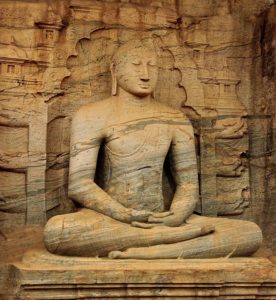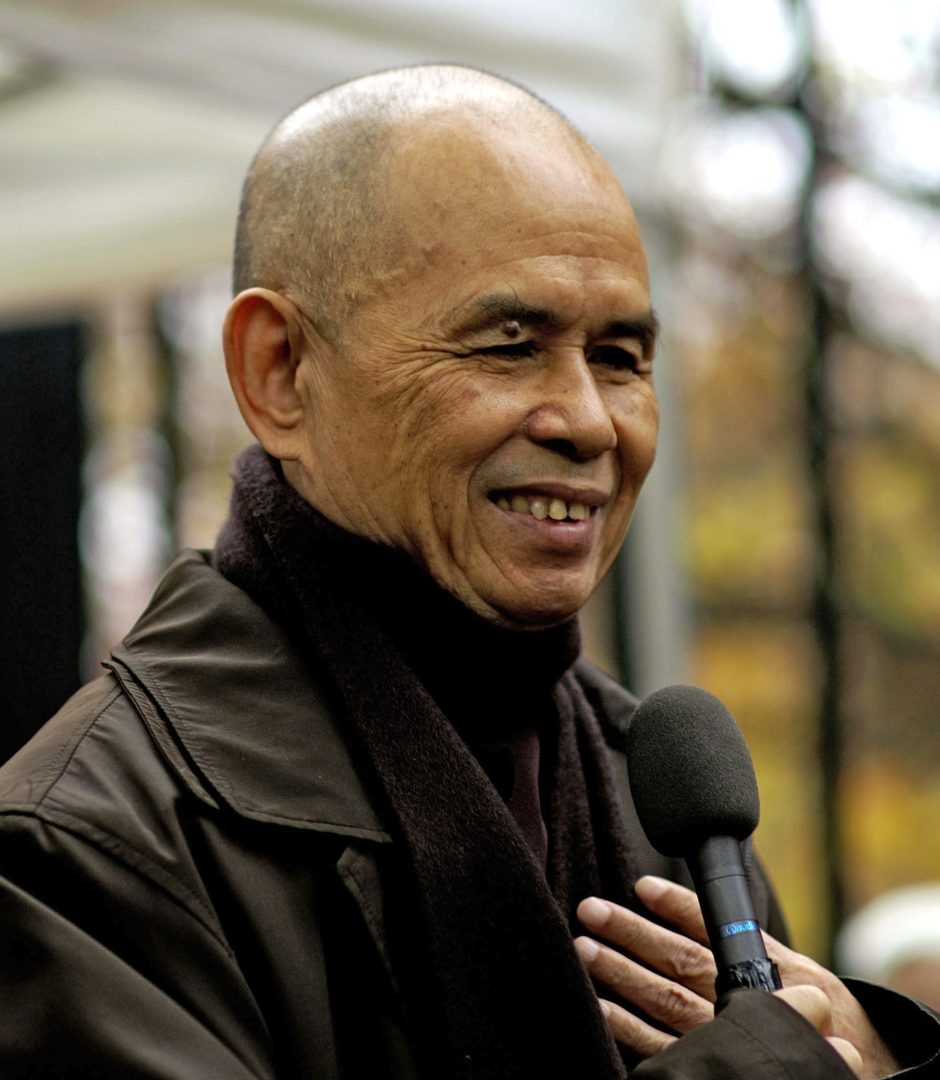Traditional Buddhism advocates a withdrawal away from the affairs of the outside world, emphasizing that everything, including war, suffering, power, and oppression, is empty, or temporary and illusory. To become involved in political situations would require an attachment, and a belief that life is something other than an illusion.
About the Historical Buddha
I will start off by saying about Historical Buddha. He chooses a life of seclusion, practicing the teachings of various schools of beliefs in attaining a learned man. However, when he finally realizes that such choices only limit himself one day. He attained enlightenment.
When Gautama attained enlightenment did he turn away from the world and go into retreat? No. He stayed in the world and helped others find the path. Is it not in our buddha-nature to do the same?
Hence I believe that Buddhism is not a passive form of religion in which one only sits down and meditate and gain enlightenment. Rather, it is through the contemplations of life, one attains understanding through the teachings of Buddha.
In his teachings, we can understand a factor. He chooses a middle way in which leads to the understanding that one must participate in worldly affairs in order to achieve peace in mind. For example, it is believed that he himself actively approached Kings during his period to curb or prevent suffering further by hindering the efforts of war through his teachings and preachings to the kings.
This does really show a passive form in which many believes Buddhism is. Buddhism itself is more than just a religion, but rather a social reformation through its philosophical teachings, very socially engaged.
Engaged in Buddhism
This new sphere has been called engaged in Buddhism. First coined by zen Buddhist leader Thich Nhat Hanh, he and his students decided they had an imperative to not only become aware of but respond to the suffering they saw around them during the Vietnam war. Rather than attempting to meditate away from the problems of the world, Thich Nhat Hanh and his community saw that responding to suffering was, in fact, a core principle of their practice; they reached their own transcendence through reaching out to others, not in isolation.
 For example, in Cambodia, the monks choose to participate themselves within society by steering the middle path in which they believe in, using non-violence demonstrations to promote constructive and political changes in Cambodia. Temples in Cambodia are not just school of teachings but are socially involved as educational and social service to the local people.
For example, in Cambodia, the monks choose to participate themselves within society by steering the middle path in which they believe in, using non-violence demonstrations to promote constructive and political changes in Cambodia. Temples in Cambodia are not just school of teachings but are socially involved as educational and social service to the local people.
Among many monks, the quest for ‘inner peace’ took precedence over the development of a more socially activist role as had occurred in neighboring Vietnam. We can call this form of participation as Engaged Buddhism, having the beliefs of Buddhism politically engaged.
In the recent movement by Myanmur’s monks, more than 20000 monks participated in the march for political change. Buddhism is often understood as a practice that involves compassion for the world, but withdrawal from it. And while that might be a misunderstanding, it still perhaps seems that chanting is a more natural act for Buddhist monks to perform than marching in the streets. And yet marching is precisely what the monks in Burma were recently doing, drawing admiration for their courage, but also eliciting surprise that the sangha (or monastic community) would get itself involved in pro-democracy demonstrations.
Buddha’s teachings are in line with democracy
The Burmese monks involved in the demonstrations would say that Buddha’s teachings are in line with democracy and that focusing attention on humanitarian efforts to achieve democracy is a worthwhile practice. In addition, they feel that serving as an example of peaceful protest can serve to help the people.
Some might also point to the Dalai Lama, who is seen as both the spiritual and political leader for the people of Tibet.
Buddhism is not just a religion in which it only wants blind faith from its followers. Its teachings revolved around the concept that the teachings help people understand their surroundings. Hence, it is high participation of mental thinking to understand and gain awareness.
In Japan, the Venerable Nichidatsu Fujii, “recognized the evils of dominance and colonial exploitation by his own government, and criticized Japanese ambitions for war against China. Deeply concerned during his India years about Japan’s expansion of military power, Guruji [Fujii] returned from India in 1938. He presented the defense ministers with ashes of the Buddha, which he had received in Sri Lanka, and proposed the adoption of peaceful national and international policies. Guruji suffered as he watched the false gods of militarism dominate the Japanese people. During the war years of 1939-1945, Guruji and his followers moved actively within and beyond Japan, chanting and beating the prayer drum, crying out for the early termination of the war and the establishment of righteousness”
A modern form of Buddhism is emerging that claims mindfulness requires an awareness of the real suffering around us, and action to help alleviate it. One Buddhist tenet advises to “save all sentient beings.” To some, this means getting involved. Buddhism is no longer passive.
https://www.youtube.com/watch?v=or4lAptNrN8





